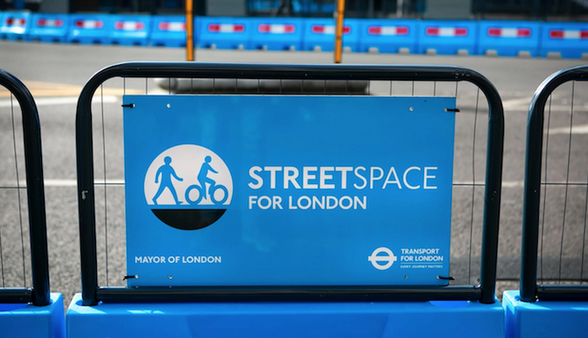The coronavirus pandemic stimulated initiatives by both the UK government and local authorities to promote active travel. The rationale was that public transport would be less attractive and would have less capacity while transmission of the virus remained a problem, so that the alternatives of walking and cycling should be promoted urgently.
The Secretary of State issued statutory guidance in May 2020 to local authorities expecting them to make significant changes to their road layouts to give more space to cyclists and pedestrians. As well as a response to the pandemic, active travel was seen as affordable, delivers significant health benefits, improves well-being, mitigates congestion, improves air quality and has no carbon emissions at the point of use. Substantial government funds were provided to local authorities for this purpose.
In London, the Mayor announced a bold new plan for street space, hoping to accommodate a ten-fold increase in cycling and a four-fold increase in walking, the rationale being that with London’s public transport capacity potentially running at a fifth of pre-crisis levels, millions of journeys a day would need to be made by other means. If people were to switch only a fraction of these journeys to cars, London risked grinding to a halt, air quality would worsen, and road danger would increase. To prevent this happening, Transport for London (TfL) would rapidly repurpose London’s streets to serve this expected unprecedented demand for walking and cycling in a major new strategic shift.
I have previously commented skeptically about the feasibility of such a large shift in travel mode. But the rationale for the urgency of the government’s and the Mayor’s initiatives was to achieve a reduction in use of buses and trains. However, that reduction came about through the measures to reduce virus transmission that included encouraging all those who could work from home to do so, as well as closure of non-essential shops during the periods of lockdown. The result was that city centres were denuded of workers and shoppers, and the extra space for walking and cycling was not needed.
The was quite often local opposition to local measure to introduce Low Traffic Neighbourhoods in which car use was restricted, not least because they were introduced without consultation as matters of urgency to respond to the pandemic. In a number of cases, decisions were reversed. An important reversal arose from a recent judicial review in the High Court initiated by bodies representing London taxi drivers who complained about TfL’s decision to exclude of taxis from an important street in central London (part of the A10 route).
The judge found against the Mayor and TfL, concluding that the measures proposed in their Plan and Guidance (Streetspace for London), and implemented in the A10 order, far exceeded what was reasonably required to meet the temporary challenges created by the pandemic. However, the judge also concluded that had the Mayor and TfL proceeded more cautiously, monitoring the situation and acting upon evidence rather than conjecture, their proposals would have been proportionate to the difficulties which needed to be addressed.
So the judgement was critical of the rushed process, but does not rule out measures that change use of streets provided proper process is followed, including gathering relevant evidence, consulting with those that might be affected, and drawing rational conclusions.
Update 22 June 2021: the Court of Appeal has reversed the High Court judgement, details of the judgement to follow.

